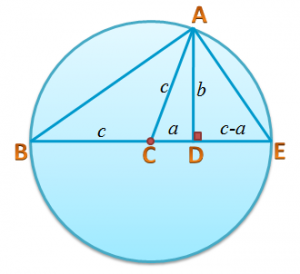A Practical Demonstration of the Pythagorean Theorem
The Pythagorean Theorem is probably the most popular theorem in school mathematics. Surely, you have heard or read about it at least once from elementary school to high school. The Pythagorean Theorem states that given a right triangle with shorter sides ,
, and hypotenuse
, the following equation holds
.


